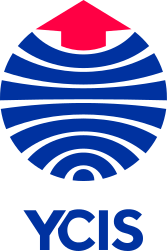Go Back
News
News
Learning in the Park Series: Primary School
News
30 May, 2019
10 : 00
Educators at Yew Chung International School of Beijing (YCIS Beijing) believe in taking full advantage of our unique position as a school in a park, to augment their lessons. YCIS Beijing’s campus being adjacent to Honglingjin Park (HLJ), allows us to extend our learning spaces into the natural environment. We frequently conduct classes in the park across all levels of our school. Whether it’s our Secondary School students interviewing the park’s visitors to practice their Chinese, our Early Childhood Education (ECE) students learning about creepy crawlies up close, or our Primary School students exploring animal habitats in context, our entire school greatly benefits from the HLJ as natural, learning resource.
Continuing our "Learning in the Park Series", this week we took a look at what our Primary School students have been up to in HLJ. We sat down with Susan Hetherington, Year 1 Learning Community Teacher, who shared with us how she’s incorporated visits to the park into her students’ lessons this school year.
How do you provide "Learning in the Park" experiences for Year 1 students?Generally speaking, before beginning a unit of study we consider if the subject easily correlates to the natural environment and/or contextual resources of the park, and if so we make plans to kick-off the unit with a lesson in the park. I find this is a great way to pique our young learners’ interest and get them primed to fully-engage with the subject from the very start.
How often do you hold lessons in the park, and what were they about?My class has gone twice this school year. The first trip was in October for our "World around Me" unit of learning, which was about cities. Our second visit was for our unit on habitats.
Our trip during our unit on habitats was an obvious choice for a visit, as courses concerning animals, plants and habitats are the easiest to plan lessons in the park around. HLJ provided us with the perfect opportunity to show students the animals and plants interacting in their natural environments and demonstrated for them what a habitat can look like and how its parts can all work together.
Subjects relating to more abstract concepts like cities, civilisations, culture and people’s place in the larger world can also be enhanced by incorporating HLJ, as we did with our above mentioned "World around Me" unit. The park served as an excellent physical reference point for our students to build their understanding of these less straight-forward concepts. For example, our HLJ visit during this course of study provided us with an opportunity to engage our students’ curiosity about the people they saw around them and the cityscapes visible beyond its borders, allowing us to make those broader concepts easier to grasp for our budding scholars’ developing minds.
What was your most recent HLJ lesson about?Our most recent lesson in the park was in March. That was the one on habitats I mentioned earlier. During that lesson, we engaged the students in a scavenger hunt for wildlife in the park. We paired the students up into two-person teams. Each team was given a checklist with words and photos of the animals to look for, and we sent them off to see which group could find all of the animals on their list first.
The students had a great time, and by exploring the environment in pairs, but without adult guidance, they were building confidence and autonomy while they learnt about the world around them. They also observed things not on their lists, like the people in the park. They eagerly asked me, and the other teachers on the trip, about the people and what they were doing in the park too. They learnt a bit about how even humans have habitats and how the park is a bit of a habitat for not only animals and bugs but us humans too.
What would you say are the benefits of holding lessons in the park?Learning in an outside space always has its benefits. It allows children to see things in a new, more dynamic context. Experiencing trees, plants, flowers, etc., hearing birds, music, the noises of daily life, it’s all very stimulating on multiple levels. Connecting real life to the school day not only gets the students more engaged with their lessons but helps them to understand how to apply their learning now and in future.
Another edition of our "Learning in the Park" series, which highlights how each division of our school makes use of Honglingjin Park (HLJ), has come to a close. If you would like to discover more about how YCIS Beijing uses HLJ to supplement our learning environment, we suggest you read the following related articles: “Learning in the Park Series: Secondary School”, “School in the Park: Beijing’s Autumnal Classroom”, “Bringing Life to Lessons: Creepy Crawlies Come to ECE”, “Chinese Interviews in Honglingjin Park”, and “Where the Class is Greener: Outdoor Learning Takes Root at YCIS Beijing”.













